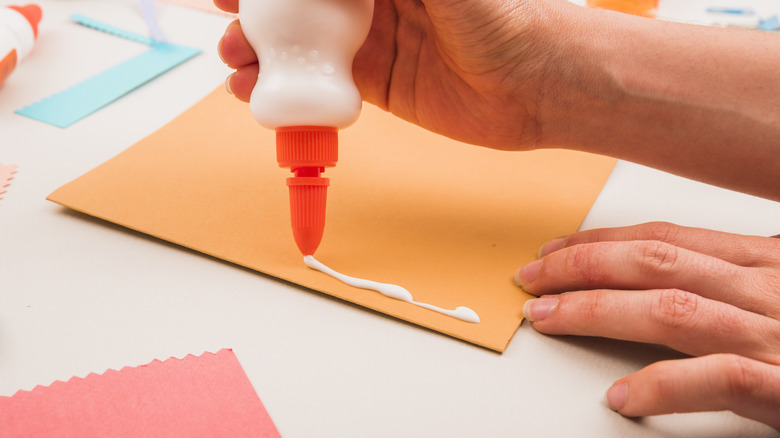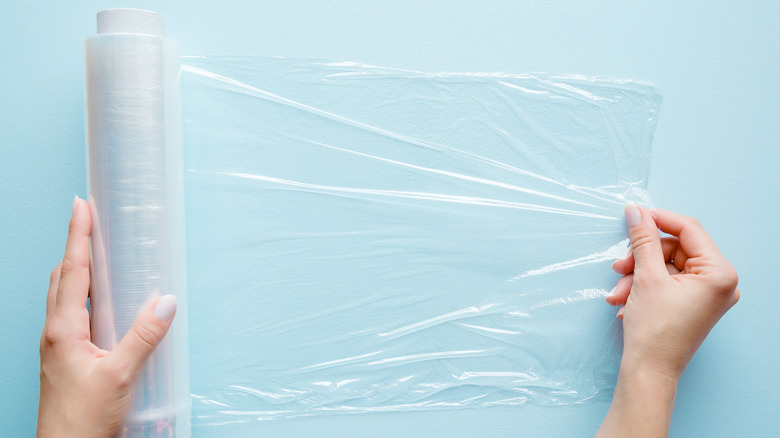This Kitchen Staple Will Solve Your Clogged Glue Bottle In A Snap
Nothing's more frustrating than grabbing a bottle of glue for crafts with the kids or to trying finish up a work working project and finding the cap is clogged. Since both all-purpose and wood glue start to solidify when they dry, there's just enough left of the cap to form a hard chunk of residue. There's an easy way to keep your glue cap clog-free, though, and it employs something you may already have in your kitchen: plastic cling wrap.
Any brand of plastic wrap will do when it comes to keeping glue like Elmer's Glue-All or even wood glue from drying in the cap. In fact, you can prevent this from ever happening if you prep a new bottle as soon as you get it home from the store. Simply unscrew the cap, place a small piece of plastic wrap (about 3 inches by 3 inches or so) over the mouth of the bottle, and screw the cap back in place. If you don't normally keep plastic wrap on hand, picking up a roll at the dollar store is an economical option for this purpose. If you follow through and repeat this process every time you use your bottle of glue, the cap won't get blocked by dried glue in the future. It's important to clean the cap before putting plastic wrap on a used bottle of glue, but that task is easy, too.
Prepping a used bottle of glue for plastic wrap
The key to keeping a glue cap clog-free is cleaning up excess glue as soon as you're finished using it. All you have to do is remove the cap and rinse it under running water. Since the glue left inside the cap is water soluble, it will dissipate in the water and drain right down the sink with no issues (just be sure not to pour glue directly into your drain without running water). You should be able to look through the hole in the cap and see light when it's rinsed thoroughly. If needed, use a toothpick to clean out any remaining glue and rinse the cap with more water. Doing this will also help prevent your glue bottle from drying shut.
After the cap is clean, dry it with a cloth or paper towel. Then, you're ready to cover the mouth of the bottle with plastic wrap and screw the cap back on the bottle to stow it away for next time. There's an added benefit to placing plastic wrap under the cap, too. Even if the top of the cap is left in the open position accidentally, the remaining glue in the bottle will remain liquified. While you might have to invest in a roll of plastic wrap to do this, it will be well worth the effort since your bottles of glue will last and last before having to be replaced.

